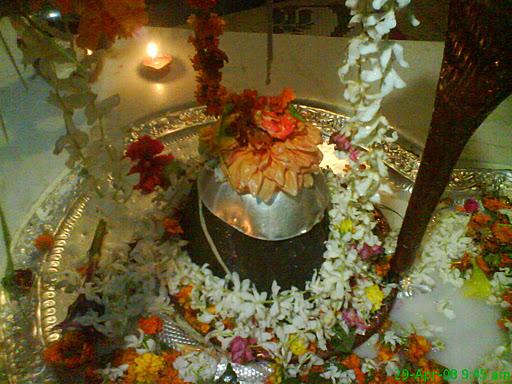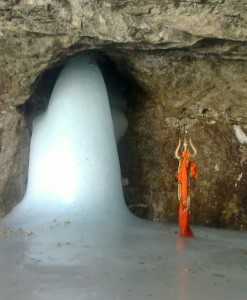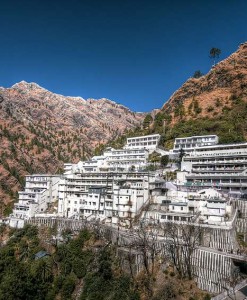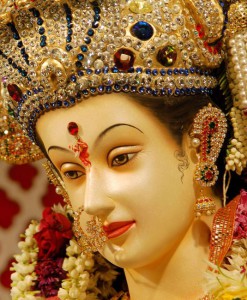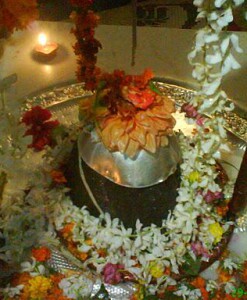No products in the cart.
The Shrine of the Peer Kho Temple is one of the old temples of ‘the City of Temples’. A large number of devotees throng it on Puranmashi, Amavasya and Ekadashi. The important festivals held here are Shivratri, Purnima amd Shravan Puranmashi or Raksha Bandhan. The lingam is located inside a small but peaceful cave embellished with white marble rectangular platform. The black stone lingam is decorated with a copper snake or Naga and a Silver sheet covers the Jallari or Yoni, topped by a copper vessel hanging to pour water continuously on the lingam. The lower part of the body of the lingam and other features are similar to the shrine of Purmandal temple complex and probably belong to the same period of early Dogra regime. The Peer Kho Temple and Peer Mitha are two temples located in the city of temples. During the reign of Raja Ajaib Dev, for Saint Siddha Ghareeb Nath entitled Peer, the temple was built in 15th century A.D according to the unconfirmed historical records. The two caves are twenty to thirty feet below the ground level. The Peer Kho cave temple has a lot of reverence among the local people of the old city.
Peer Kho Cave Temple, Jammu
The shrine of Lord Shiva also known as Jamvant cave belongs to an old historic spot. It is located amidst igneous rocks topped by the sedimentary deposit of the River and acacia jungle in Northeast of Jammu city on the side of circular road above the terrace of Tawi River.
The pink, high arched gateway with a white marble stair with a railing leads to the temple complex and into a long verandah, with marble and mosaic flooring, which opens to another entrance on the opposite side from the Pacca Danga via Jullaka Mohalla. The courtyard is flanked by three shikhara on the left side with two of them modern and one ancient. The low round ribbed Gumband or dome is merged with the modern structure with stone finial and an inverted lotus. This serves as the entrance to the cave shrines further cut into the boulder conglomerate deposit of the River Tawi, which were formed due to the successive flooding, and receding of water for centuries. The round domed entrance leading to the caves is embellished with beautiful later Mughal or Dogra style paintings on the ceiling and with floral motifs in the centre of the dome. The pillared arched niches on the periphery of wall and ceiling painted with Dogra style painting is similar to the motifs of Ram Nagar Palace complex in Udhampur District of Jammu province. The colour scheme & the style of paintings prove that the paintings belong to the mid 19th century of Jammu school of painting with emphasis on the indigo colour.
The other rectangular shikharas on either side with brass finials are of recent origin. There is a Devi temple built on the right side of it in the corner of courtyard. It has a white marble miniature temple shrine embellished with beautiful image of a goddess in a glass casing. On right side, there is a series of rooms which serve as the residential quarters for the staff of the temple. The present Mahant of the temple is Peer Rattan Nath who holds the Gadhi or the ownership of the temple.
The round domed entrance leads to a small opening to a low-level passage and bifurcates into the Amar Nath Guffa cave on the right side. The low ceiling channel further leads to Siva shrine or the Amar Nath Cave Siva Temple known as Jamvant Cave after one of the heroes of the famous Indian Epic of the Ramayana. There is another small opening on the left side which goes further downwards to the Nav Durga shrine.
It a long grilled temple decorated with life size idols of Lord Rama, Sita, Lord Vishnu and other gods and goddesses. The narrow means of access further extends in a winding manner to a large covered courtyard and further down extends into another small opening to the Nau Devi’s Guffa or Nine Devi’s Cave shrine. The long platform with statues of nine Goddesses in attractive red robes is a wonderful view to behold in a cave shrine. These Nav Devis namely are Shri Mata Shelia Puri Devi, Shri Mata Bhadrachani Devi, Shri Mata Chandra Ghanta Devi, Shri Mata Sakandanatha Devi, Shri Mata Kushamandra Devi , Shri Mata Katyani Devi ,Shri Mata Kalarathri Devi, Shri Mata Maha Devi, Shri Mata Siddi Devi.
There is separate passage for entry and exit of the Cave which is excavated into an igneous rock which is twenty feets below the level of the temple. The peaceful, calm and serene place is suitable for spiritual attainment.
The temple courtyard has a Tulsi plant pedestal in the premises, which also indicates fine reflection of the Dogra style of architecture found in Ram Nagar palace at Ram Nagar and at Zorawar Singh Residence cum Palace Complex of Vijaypur in Reasi.
Timing: 5:00 am to 7:00 pm
Some of the major festivals celebrated annually include Ram Navmi, Janmashtami, Shivratri, Holi, Ganesh Chaturthi and Diwali. Marking the Hindu New Year, Diwali is one of the grandest Hindu festivals, and attracts many visitors and devotees to the mandir.
The unique feature of the temple is the Ghoraknath eternal Dhunni or continuous smoke-emitting shrine in the centre of the temple. There is small Samadhi of Shri Peer Shiv Nath as his memorial just opposite the main entrance from Peer Kho Mohalla Side. On the right side of the main entrance, there is a small shrine of Shani Devata. The white metal standing image of Lord Shani is placed on a square platform worshipped by the local people in large numbers on every Saturday. The temple located on the riverbank provides fresh air and beautiful scenery to the visitors. There are many handicrafts and handlooms shops with a variety of crafted souvenirs for the visitors who happen to visit the temple daily on the dead end road of the Peer Kho Mohalla. The whole temple has been built on a high-elevated artificial platform to prevent the flooding of the water of the Tawi River in the rainy season.
The temple requires more area for parking. The white marble staircase requires to made unslippery by roughing the marble steps otherwise it is dangerous to use in the rainy season. The proper signage at the Circular Road needs improvement for easy access to the temple. The temple also requires some benches for the devotees to take some rest after visiting the temple. The viewing points on the Western side of the temple need to refurished with proper sheds and benches so that visitors take rest and enjoy the beautiful scenery of the River and beyond.

